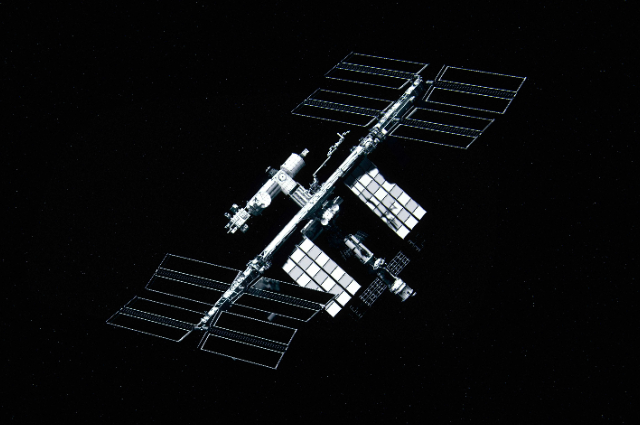
Photo by Norbert Kowalczyk on Unsplash
Introduction
As humanity looks toward the stars with renewed vigor, the concept of sustainable space travel has emerged as a critical frontier. This article explores innovative strategies for ensuring that our extraterrestrial endeavors are not only possible but also sustainable. By focusing on the intersection of cutting-edge technology, environmental stewardship, and socio-economic impact, we can lay the foundation for a future where space travel benefits all of humanity.
The Current State of Space Travel:
Space travel has progressed significantly since the Apollo missions, with private companies like SpaceX and Blue Origin pushing the boundaries of what is possible. However, the environmental and economic costs of current space travel methods are substantial. Traditional rocket launches generate significant greenhouse gas emissions and leave behind debris that can remain in orbit for decades. Addressing these issues is essential for the future of space exploration.
Sustainable Propulsion Systems:
One of the most promising areas of research in sustainable space travel is the development of alternative propulsion systems. Solar sails, ion thrusters, and nuclear propulsion are all potential solutions that could reduce the environmental impact of space travel.
Solar Sails:
Utilizing the pressure of sunlight to propel spacecraft, solar sails offer a fuel-free method of travel. This technology is particularly suited for long-duration missions where traditional fuel would be impractical.
Ion Thrusters:
These engines use electricity to accelerate ions, providing a highly efficient form of propulsion. While slower than chemical rockets, ion thrusters are ideal for deep space missions where fuel efficiency is paramount.
Nuclear Propulsion:
By harnessing the power of nuclear reactions, these engines could significantly reduce travel time to distant destinations like Mars or the outer planets. Safety and waste disposal remain significant challenges, but the potential benefits are enormous.
Closed-Loop Life Support Systems
Sustainable space travel requires closed-loop life support systems that can recycle air, water, and waste. The International Space Station (ISS) has already demonstrated the viability of such systems, but further advancements are needed for long-duration missions.
Water Recycling:
Advanced filtration systems can reclaim water from urine, sweat, and other sources, reducing the need for resupply missions.
Air Purification:
Technologies that scrub carbon dioxide and replenish oxygen are essential for maintaining a breathable atmosphere.
Waste Management:
Effective waste recycling can convert organic waste into useful resources, such as fertilizer for growing food.
In-Situ Resource Utilization (ISRU)
Mining and utilizing resources found on other planets and asteroids is a key component of sustainable space travel. ISRU can reduce the need for supplies from Earth, lowering costs and environmental impact.
Lunar Resources:
The Moon's surface contains valuable materials like water ice, which can be converted into oxygen and hydrogen for fuel.
Asteroid Mining:
Asteroids are rich in metals and other resources that can be used for construction and manufacturing in space.
Martian Resources:
Mars offers the potential for harvesting water and building materials, essential for supporting a human colony.
Space Habitats and Terraforming:
Building sustainable habitats in space or on other planets is a monumental challenge. Advanced materials, autonomous construction, and terraforming technologies are essential for creating livable environments.
3D Printing:
Using regolith (lunar or Martian soil) as a building material, 3D printing can construct habitats with minimal reliance on Earth-based supplies.
Autonomous Construction:
Robots and AI can perform construction tasks, reducing the need for human labor in hazardous environments.
Terraforming:
Although still theoretical, terraforming involves altering the environment of a planet to make it habitable. Techniques like releasing greenhouse gases to warm Mars could one day enable human colonization
Ethical and Socio-Economic Considerations:
Sustainable space travel is not just a technical challenge; it also raises important ethical and socio-economic questions.
Equitable Access:
Ensuring that space travel benefits all of humanity, not just a privileged few, is crucial. International cooperation and policies that promote inclusivity are essential.
Environmental Stewardship:
Protecting extraterrestrial environments from contamination and preserving their scientific value is a moral imperative.
Economic Impact:
The space economy has the potential to create jobs and drive technological innovation. Policies that support sustainable development in space can have far-reaching benefits for Earth.
Conclusion:
The future of sustainable space travel hinges on our ability to innovate and collaborate. By developing advanced propulsion systems, closed-loop life support, ISRU technologies, and ethical frameworks, we can ensure that our journey to the stars is both feasible and responsible. As we stand on the cusp of a new era in space exploration, the choices we make today will shape the destiny of humanity for generations to come.
This visionary approach to sustainable space travel offers a unique perspective that could distinguish your article in any competition. It combines technical innovation with ethical considerations, providing a comprehensive roadmap for the future.
